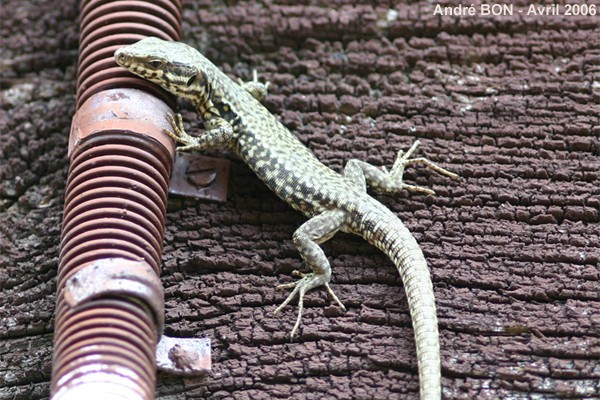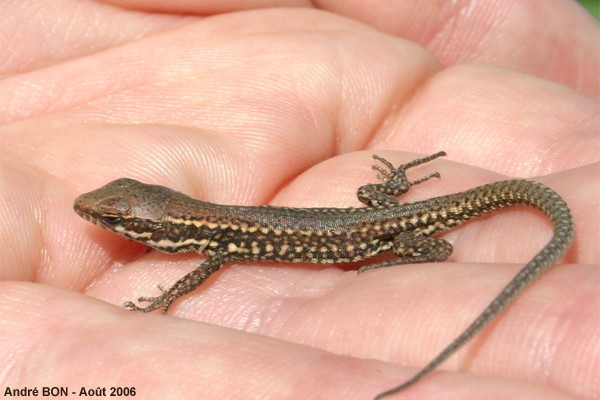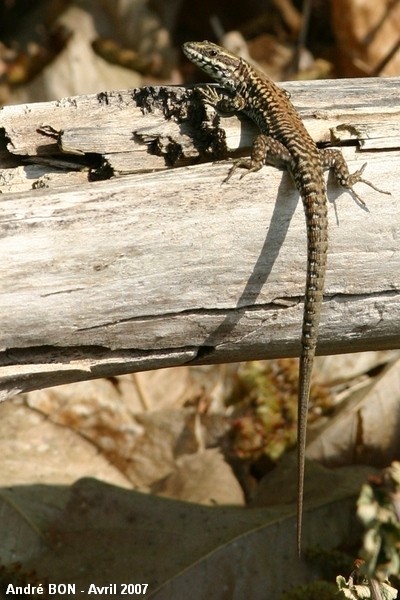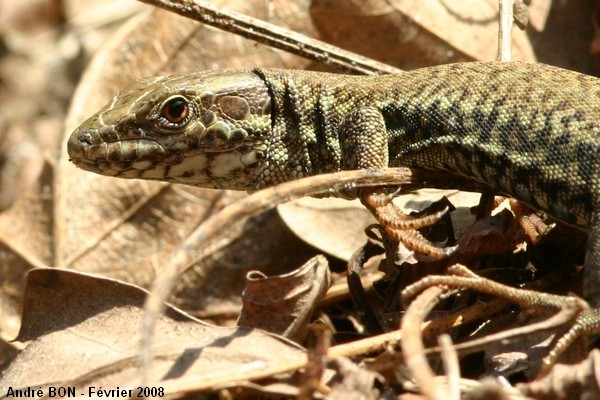




| Wall Lizard (Podarcis muralis (Laurenti, 1768)) |





|
|
Scientific name: Podarcis muralis (Laurenti, 1768) Common name: Wall Lizard Other names: Other scientific name: Lacerta muralis. French name: Lézard des murailles Order: Squamata Suborder: Sauria Family: Lacertidae Size: Male 20 cm, female 18 cm. Habitat : Old railways, old walls, stone heaps, quarries, etc. You can often observe this lizard close to human buildings. Food: Insects, spiders, woodlouses, small molluscs and other invertebrates. Reproduction : The eggs are laid between April and June (2 to 12 eggs). Incubation duration is about two months. Geographic area: Southern Europe, north to the Netherlands and to south of Great Britain. Introduced to North America. |
The wall Lizard is a variable brown, grey and sometimes greenish colour. The underside is yellow or pale reddish. The underside of the neck is mottled with black marks. The wall Lizard can be seen all year long as soon as the weather is sunny and the ground temperature reaches or exceeds 16°C. The tail of this lizard can break off so that it can escape from predators. A new tail grows progressively to replace the lost one. |
| [To know more about the Wall Lizard] [Next picture] [Top] |

|
I saw this lizard on the wall of an old barn. |
| [To know more about the Wall Lizard] [Next picture] [Previous picture] [Top] |

|
Here is a picture that shows an exception to my personal ethic: No capture! This young Wall Lizard, here in my son's hand, will be released in a couple of seconds. |
| [To know more about the Wall Lizard] [Next picture] [Previous picture] [Top] |

|
I also observe many Wall Lizards in the forest. |
| [To know more about the Wall Lizard] [Next picture] [Previous picture] [Top] |

|
The Wall Lizards are often hidden under the dead leave bed. It is not so often that we can observe the whole body. |
| [To know more about the Wall Lizard] [Previous picture] [Top] |

|
Close up view on the head. |